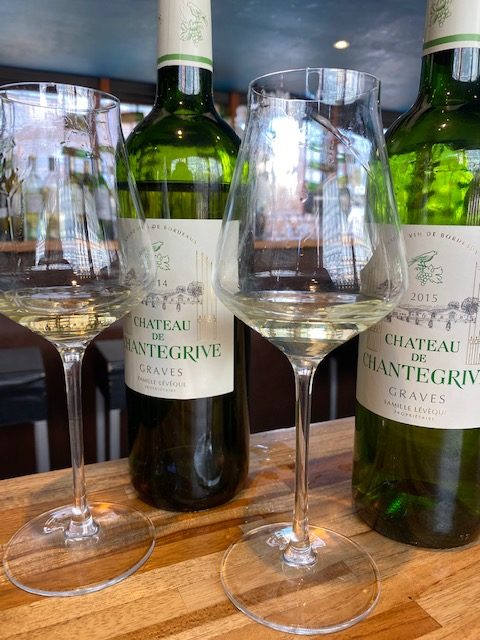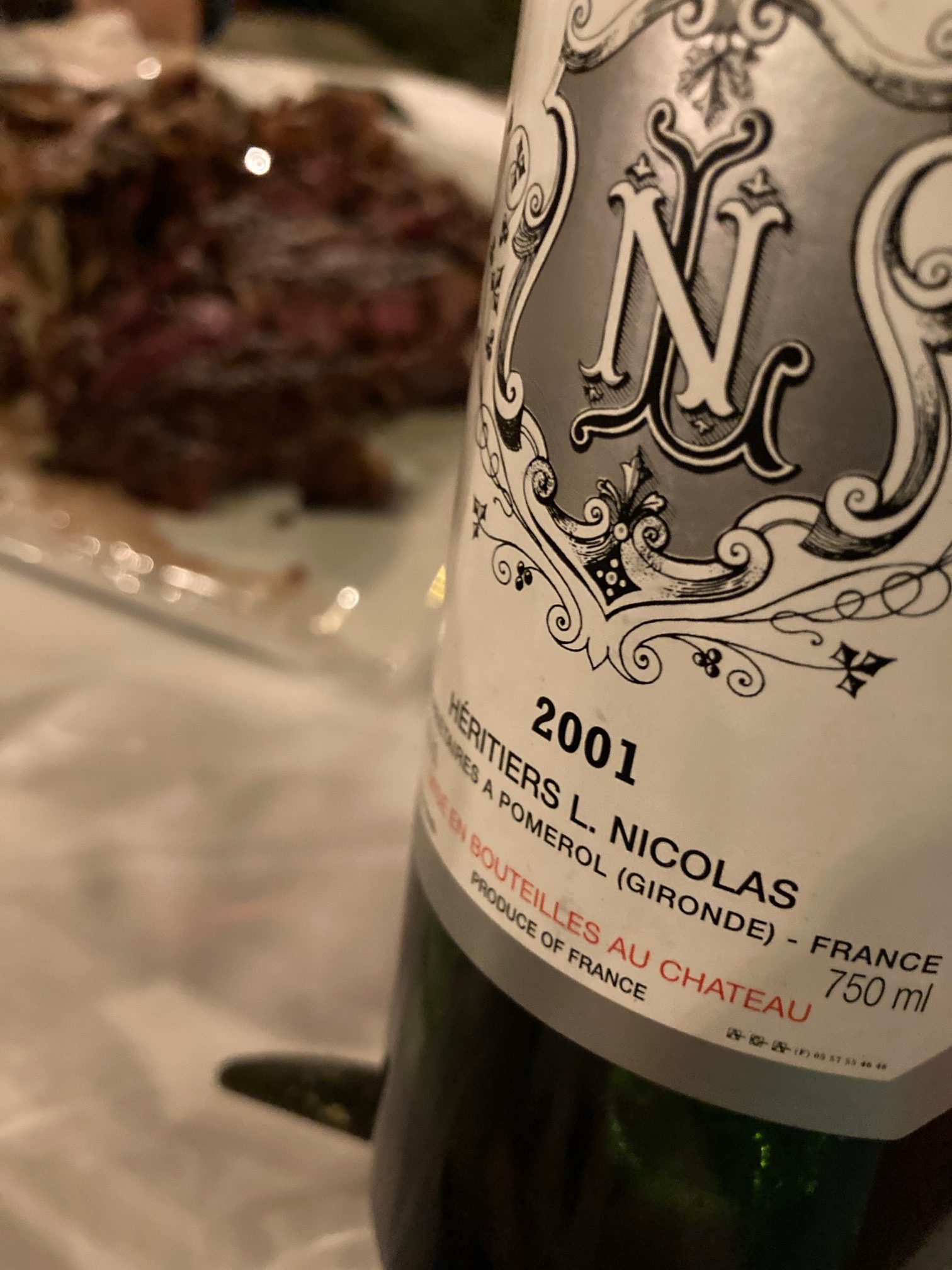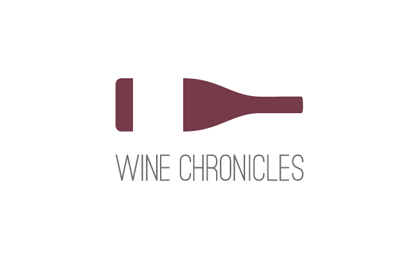Pessac-Léognan 2018 reds
Posted on January 24, 2021

Hits amidst gravel and heat
By Panos Kakaviatos for wine-chronicles.com
24 January 2021
2018 was not the ideal vintage for warmer soils, so I would tip my hat more to 2016 as the recent vintage to purchase from Pessac-Léognan. Still, some very good to excellent wines. A few stars and several superb price/quality ratio wines make 2018 most interesting. Many tasted non blind with Jane Anson in Bordeaux. The bottle of Château Pape Clement was corked, so the estate delivered one to me in Strasbourg. The wines of Domaine Clarence Dillon tasted at the CIVB offices of Bordeaux. Fun fact: Many wines had 14.5% on the label, so as to avoid having to add the Trump tax of 25% to still wines. No doubt many of these were above 14% but not close to 14.5.
As usual, if in bold, I liked in particular. If red and bold, even more. When underlined, too, a wine nirvana.
Château Bouscaut – Bravo to Château Bouscaut, which not too long ago, showed a tendency towards ultra ripeness. One would think that in a solar vintage like 2018, with record alcohol levels – 14.5% on the label – that we would get big wine. But no, this blend of 58% Merlot, 36% Cabernet Sauvignon and 6% Malbec, cropped at a healthy 42 hectoliters per hectare, benefitted from clay on limestone terroir that buffered the intense dry heat stress of 2018. I liked it from barrel and that promise is fulfilled from bottle, with a sap-filled mid palate, poise and juicy refinement. Smooth, succulent and savory, the wine displays bright ripe fruit, albeit a touch of headiness, but really that is quibbling. Lovely wine to some extent “reigned in” with the dark spice and serious feel coming from the Malbec. Solidly fair pricing at about €36 retail including taxes. 94
Château Carbonnieux – The nose comes across more crackling red cranberry, as compared to the Bouscaut tasted just before, just as I had experienced from barrel. I like the dominant leafy Cabernet in the blend – about 65% – lending grip, but the tannins lack some refinement, leading to a somewhat pinched finish. Cheers to the iodine aspect that could be due to earlier picking, but this wine illustrates the limits of the 2018 vintage. Aged in 40% new oak. Label indicated alcohol: 14.5% 91+
Château Les Carmes Haut Brion* – A top wine from the rather hot and gravely soils of the famous Pessac-Léognan appellation, as director Guillaume Pouthier pulled out all stops to maintain freshness, fermenting grapes at over 50% whole cluster and not de-leafing, so as to ensure that his grapes were not grilled by the sun. Blending 37% Cabernet Franc, 34% Cabernet Sauvignon and the rest Merlot, the wine is both delectable and serious, conveying wet stone like “minerality” while being driven by juicy, ripe fruit flavors. The alcohol is somewhat low for the vintage, at 13.75, with excellent acidity to balance that. While on the higher end of the price spectrum for this category, this wine from barrel is more engaging to me than first growth Château Haut Brion, tasted the same day. What I wrote from barrel applies from bottle, after tasting both wines about the same time in Bordeaux, non-blind. Bottled in September last year, it has aged 21 months in 79% new oak and the rest divided between 10% big Alsatian oak and 10% amphorae. “If we want to make wines that are rich and powerful, we can” said Pouthier, but that is not the goal here. The rather high 85 IPT tannic index in 2018 was extracted softly. In fermention vats, the cap was held down with entire grapes underneath so the extraction came more from the skins and “it is more gentle”, he says. It is the crasse de fer that you get from the terroir to get wet stone minerality on the palate. The pH is 3.6 (in 2009 and 2010, it was 3.9). “We worked the soils to reduce the potassium and that has helped reduce the pH”, he explains. A wine with real power remaining subtle, with tobacco aspects from the Cabernet Franc, also like silex. The peony aromatics kick in on the long with perfumed elegance. A great wine, and I bought six bottles. 97 Read More
Bordeaux 2018 dry whites
Posted on January 24, 2021

Some excellent wines in a challenging vintage
By Panos Kakaviatos for wine-chronicles.com
24 January 2021
The warmth of the vintage not truly ideal for dry whites, some producers did craft excellent wines, including some from outside the famous Graves (including the northern Pessac-Léognan appellation) region, known for its dry white wines. While tasting the dry whites crafted by producers in Barsac and Sauternes, Jean-Jacques Dubourdieu of Château Doisy-Daëne in Barsac poured wines on behalf of fellow producers. “You had to be reactive for the dry whites to maintain freshness”, he said. “But since we are on limestone, in Barsac, we were able to have that freshness.” The key was to have proper pH. “You had to harvest early” to maintain that acidity, he added. The dry whites were picked at end of August or latest first week of September for many estates. Tasting notes here divided into three parts (Part 1 Pessac-Léognan, Part 2 Mostly Médoc estate whites, although one excellent Fronsac, too -the hyperlink takes you there immediately – and Part 3, Dry Whites made by Sauternes and Barsac producers).
As usual, wines in bold, I liked especially. If red and bold, even more. If underlined, too, a kind of wine nirvana.
Part 1: Pessac-Léognan and Graves
Most Pessac Léognan wines were tasted in Bordeaux non blind with Jane Anson, while the Domaine Clarence Dillon wines were tasted at the CIVB in Bordeaux non blind.
Château Bouscaut – The acacia and honeyed aspects from this blend of 68% Sauvignon Blanc and 32% Semillon, having aged in 40% new oak, are clear but there also is freshness here. Sure, it comes across a touch warm, like some 2018s but I like the wine’s endearing honeysuckle and sweet floral aspects. 14% alcohol. 92
Château Carbonnieux – This blend of 70% Sauvignon Blanc and 30% Semillon clocking in at 13.5% alcohol is one of the more successful whites from the vintage. Typically “cool” in aromatic expression, perhaps somewhat varietal, too, but lots of juiciness on the palate and it comes across refreshing, with grapefruit zing even if a touch under powered. I like the tanginess on the finish! 93 Read More
Bordeaux 2019 from barrel
Posted on September 29, 2020

The tasting notes!
By Panos Kakaviatos for wine-chronicles.com
29 September 2020
Left Bank: Graves/Pessac-Léognan – Médoc/Haut Médoc/Moulis/Listrac – Cru Bourgeois – Margaux – Pauillac – Saint Estèphe – Saint Julien – Sauternes
Right Bank and More: Bordeaux and Côtes AOC / Fronsac / Pomerol / Saint Emilion
And because the vintage ends in -9, two handy lists:
9 favorites (price no object): Château Brane Cantenac (Margaux), Clos l’Eglise (Pomerol), Château La Conseillante (Pomerol), Château d’Issan (Margaux), Château Montrose (Saint Estèphe), Château Mouton Rothschild (Pauillac), Petit Mouton (Pauillac), Château Pichon Longueville Baron (Pauillac), Château Pichon Longueville Comtesse de Lalande (Pauillac)
9 (especially competitively priced) favorites: Clos du Marquis (Saint Julien), Château La Dauphine (Fronsac), Reserve de la Comtesse (Pauillac), Domaine de Chevalier Rouge (Pessac-Léognan) Château Grand Puy Lacoste (Pauillac), Château Lagrange (Saint Julien), Château Malartic-Lagravière (Pessac Léognan), Château Sociando Mallet (Haut-Médoc), Château Soutard (Saint Emilion)
Dear Readers,
Thank you for your patience in this COVID19 vintage that took precious time from what we all normally do.
Long overdue and hardly comprehensive, my Bordeaux 2019 barrel sample tasting notes mix top estates and less heralded, from the Left to the Right Bank.
I chose not to have many bottles shipped to Strasbourg, because I felt that one year “less hyped” for Bordeaux is refreshing and could mean a vintage better priced. As things stand now, many discounts (some really good ones), even though back vintages are available for comparable (or even lower) prices and will be sooner ready to drink. But 2019 seems well priced, with less “best-vintage-ever” buzz: Indeed, my impression from what I did taste is positive, as the tasting notes attest.
I did assess top Cru Bourgeois barrel samples from home, about which you can read here, and benefited from a Baron Philippe de Rothschild S.A. shipment, including Château Mouton Rothschild, to sense how at least one famous First performed from barrel.
Notes also reflect impressions from the Grand Cercle in Bordeaux last month and a trade tasting in Germany from July. Although the June trip to Bordeaux was mainly for a Decanter Magazine article unrelated to 2019 barrel samples, I visited a few properties for on-location vintage comments. Read More
White Bordeaux: 2014 vintage
Posted on September 15, 2020

With a focus on Château Smith Haut Lafitte
By Panos Kakaviatos for wine-chronicles.com
15 September 2020
Top three 2014 whites from this tasting? Domaine de Chevalier, Château Pape Clément and Château Smith Haut Lafitte
Last week Decanter Magazine published an article I wrote – subscribers only – about how fine dry white Bordeaux can be, with a focus on the Pessac-Léognan appellation. For that text, I tasted wines from the 2014 and 2015 vintages, as they show some age and because they are so different. Tasting notes in the article focused on 2015 for two reasons: (1) given global climate change, a warmer vintage like 2015 will become more common and (2) it seemed by and large more ready to drink in 2020. For either vintage, one best enjoys quality dry whites not immediately upon release, but at least with five years aging.

Note how Château de Chantegrive (Graves AOC) in 2014 looks more evolved than the 2015, by more than just one year. It was not the only example. Two very different vintages, but interesting tasting results.
Worthy mention on how more humble wines from the Graves region – not just from the more elite Pessac-Léognan – did very well in the tasting I did for the article. Take for example Château de Chantegrive 2015. I served a bottle for friends who regularly drink fine wine, and they were happy: “A five-year-old white Bordeaux?” one almost exclaimed in posing the question. Yes it is, I affirmed. And it costs under $20 a bottle. Read More
Wine, sea, sun and Blue Fish
Posted on September 10, 2020

Along the Athenian Riviera, among other adventures
Athens log, updates and restaurant recommendations : photos and text by Panos Kakaviatos
10 September 2020
Dear readers, it has been a while since I last posted in these pages, but I am (finally) putting together the rest of what 2019 Bordeaux barrel sample notes I have, so thanks for waiting just a bit longer. I was also busy getting an article published in Decanter about white Graves wines (for subscribers only) and a text on Assyrtiko to be published in The World of Fine Wine.
My studies to earn a WSET diploma in fine wine continue, thanks to Konstantinos Lazarakis MW here in Athens, where I took a few days off as well. The COVID19 crap has thrown a monkey wrench into many plans, leading to delays in getting this project done. Konstantinos had given me a crash course on Greek wines back in 2013 – over 50 Greek wines red and white – to see how many had much improved (already much more these days). During that tasting, I discovered the brilliant Ovilos for example… And since that tasting, I note that more Greek winemakers are better judging the use of oak especially for red wines and to what extent Assyrtiko has earned its place as a world class dry white wine variety.
Kritikos Taverna
WSET coursework included tasting 12 wines blind and 15-20 non-blind each day for three days. And I realized that I better get the handle on using proper WSET lingo for tasting notes, if I want to pass the exam. I also discovered a superb taverna in the city’s leafy northern suburbs, which must be mentioned before I get to the fish and seafood.

A spot of Pomerol with top Greek meats.
 Wine Chronicles
Wine Chronicles
Recent Comments